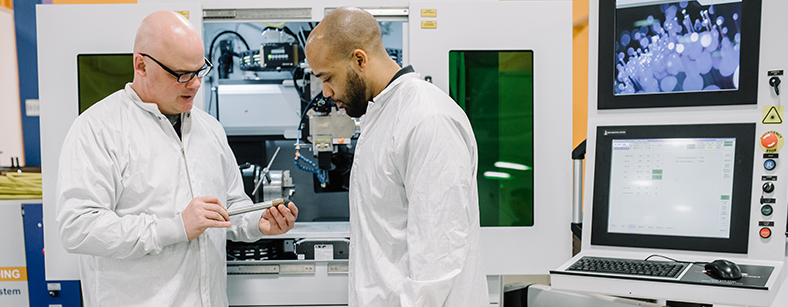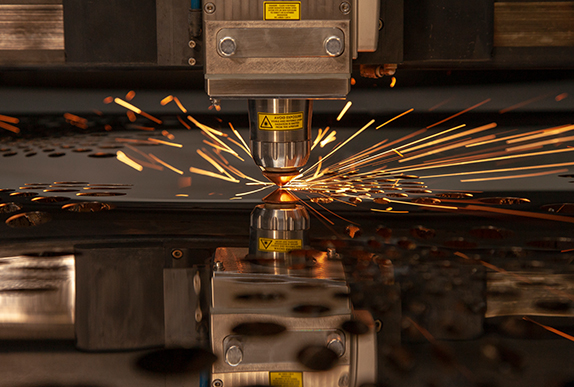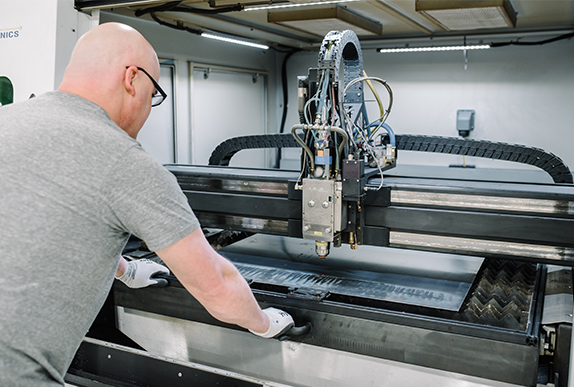Blog
What Are the Advantages of Laser Machining?
Laser machining has replaced a variety of traditional materials processing applications such as cutting in welding, in both manufacturing and R&D environments.
Available laser power continues to increase allowing for cutting of ever increasing thicknesses. For example a 4 kW fiber can be used to cut metals such as mild steel, stainless steel, brass, copper and aluminum 6 mm thick at speeds above 1 m/min. With increasing power of over 10 kW thicknesses above 25 mm can be achieved. Waterjet can be used to cut very thick materials in excess of 50 mm thick but operating costs are typically high and also cutting speed can become slow depending on the part’s geometry.
Lasers can be used in both macro as well as micro applications, with feature sizes down to the micron level. There is an increased interest in the laser micromachining of variable shape and size features for a wide variety of materials. Quality and throughput requirements continue to rise, with tighter tolerances regarding dimensional and positional accuracy. Improved laser sources and manufacturing techniques, with advanced system integration and process control are available to address increasingly demanding industry requirements.
The choice of optimum pulse duration, wavelength, and machining technique for high precision micromachining applications depends on the material properties as well as on the application specifications such as quality, feature size, tolerances, and throughput. Typically, pulsed lasers working in the nanosecond regime and shorter down to picosecond and femtosecond pulse durations are used for micromachining, driving an ablative machining technique where each pulse removed a well-defined amount of material with little impact to the surrounding material, allowing for micron level dimensional accuracies.
Some of the main advantages of laser machining include:
- The ability to machine metals and non-metals (e.g. ceramics and polymers) This can be done by adjusting laser properties such as peak power, wavelength, and pulse duration.
- It’s a non-contact technique, which prevents contamination of the work piece or wear of the “machining tool” as is the case in traditional mechanical processes.
- An automated process is easy to achieve thanks to high speed, high accuracy and repeatability.
- The capability to machine very small features down to micron level
- Machining of flat parts or complex 3D parts can be easily achieved through the use of the correct workstation, which allows processing at a variety of angles vs. the surface of workpiece.
Laser Cutting
Laser cutting allows for higher accuracy than other cutting solutions such as plasma, oxy fuel, or waterjet, at faster speeds. Wire electrical discharge machining (EDM) can also be used for high accuracy cutting, but can only be used with conductive materials and is typically a very slow process.Available laser power continues to increase allowing for cutting of ever increasing thicknesses. For example a 4 kW fiber can be used to cut metals such as mild steel, stainless steel, brass, copper and aluminum 6 mm thick at speeds above 1 m/min. With increasing power of over 10 kW thicknesses above 25 mm can be achieved. Waterjet can be used to cut very thick materials in excess of 50 mm thick but operating costs are typically high and also cutting speed can become slow depending on the part’s geometry.
Laser Welding
Lasers are used to weld a wide variety of materials such as carbon steels, high strength steels, stainless steels, aluminum, copper, and titanium. Welding dissimilar materials is also achievable (i.e. metals to other metals or metals to polymers.) Unlike traditional arc welding processes that require a flow of electric current, lasers rely on the absorption of light to generate heat and can be used to also weld non-conductive materials such as polymers to themselves or metals. The beam can be tightly focused allowing for high accuracy and small heat affected zones for example when compared to plasma arc welding techniques, such as TIG and MIG. Deep and narrow high aspect ratio welds can be produced allowing welding of both small and thin components as well as thick large parts. For example, 40 kW can be used for deep penetration welds in metals to around 40 mm. Laser welding is typically done in open air with using a cover gas, which is often easier to implement than electron beam welding that requires a vacuum.Lasers can be used in both macro as well as micro applications, with feature sizes down to the micron level. There is an increased interest in the laser micromachining of variable shape and size features for a wide variety of materials. Quality and throughput requirements continue to rise, with tighter tolerances regarding dimensional and positional accuracy. Improved laser sources and manufacturing techniques, with advanced system integration and process control are available to address increasingly demanding industry requirements.
The choice of optimum pulse duration, wavelength, and machining technique for high precision micromachining applications depends on the material properties as well as on the application specifications such as quality, feature size, tolerances, and throughput. Typically, pulsed lasers working in the nanosecond regime and shorter down to picosecond and femtosecond pulse durations are used for micromachining, driving an ablative machining technique where each pulse removed a well-defined amount of material with little impact to the surrounding material, allowing for micron level dimensional accuracies.



